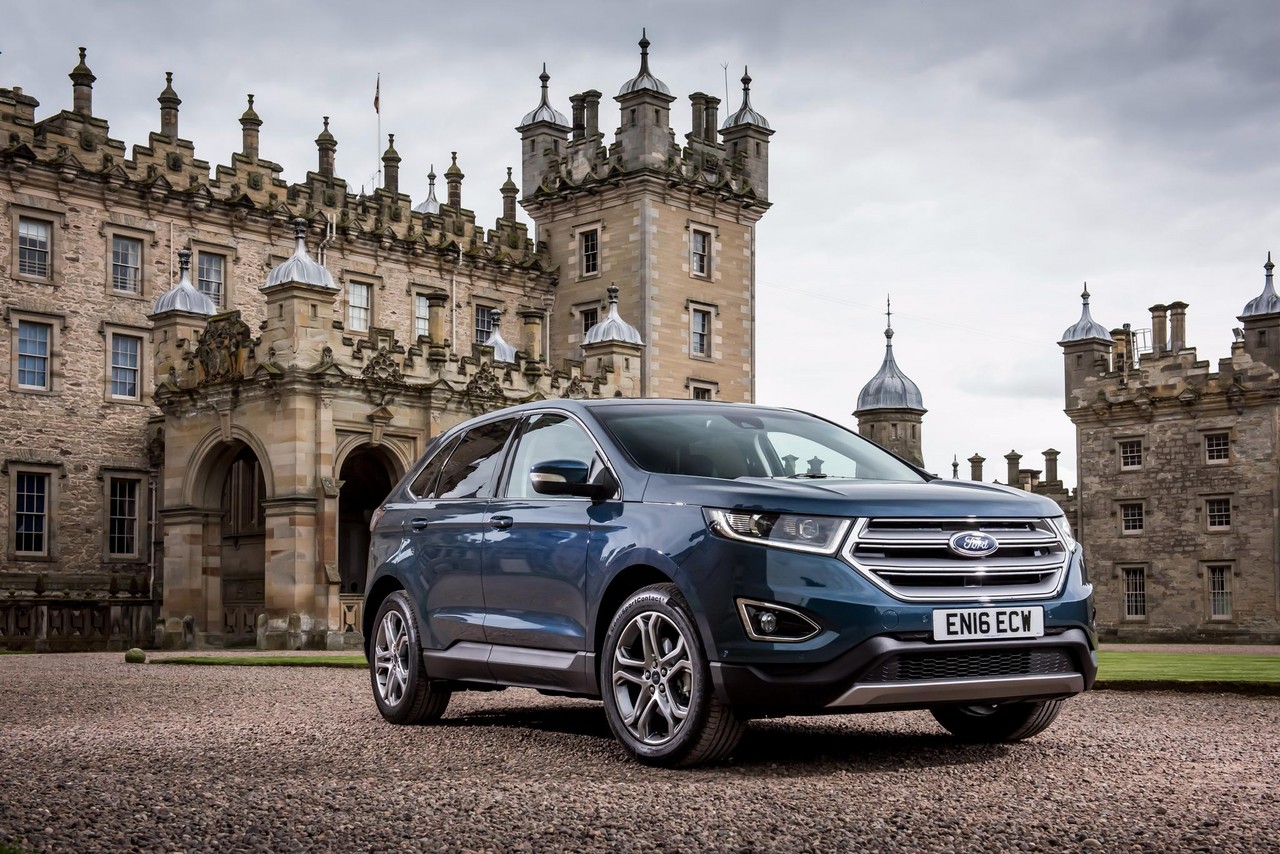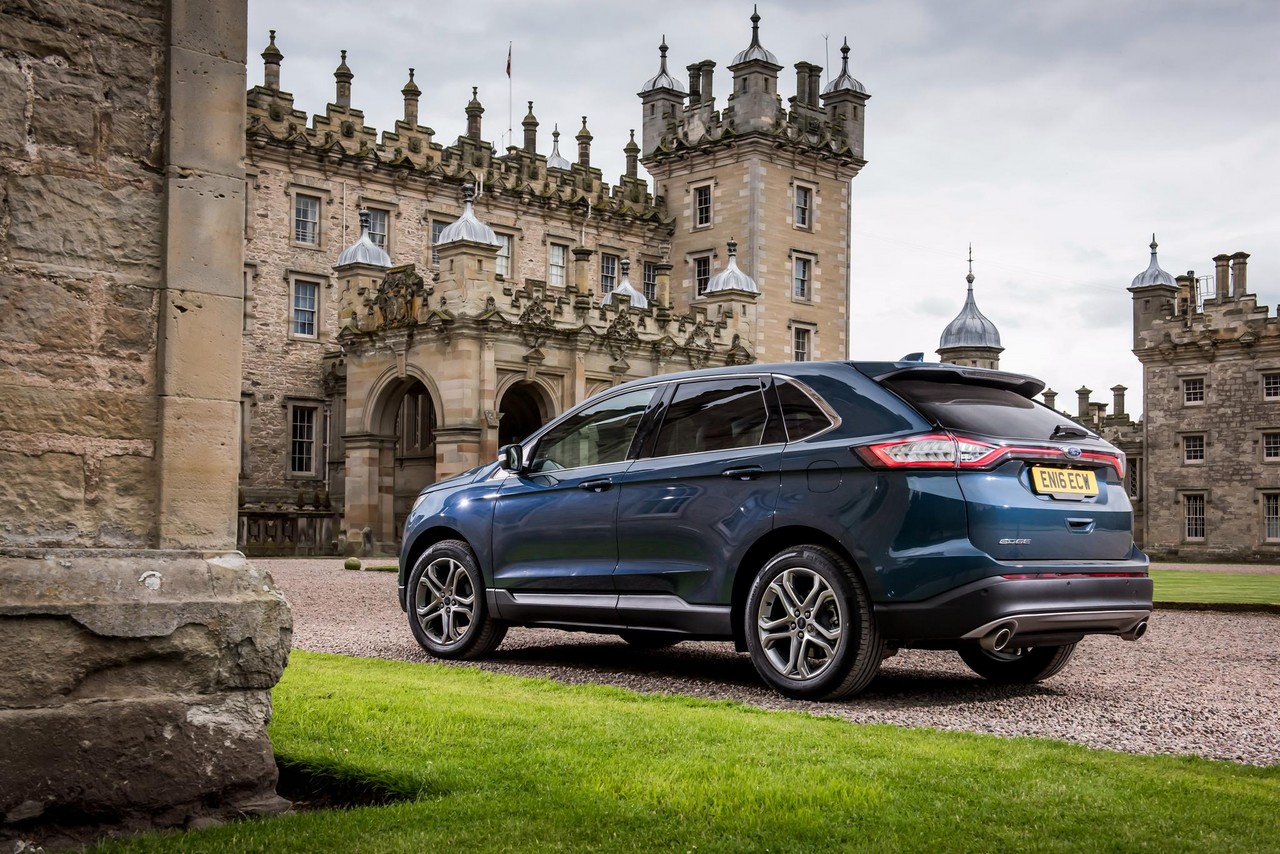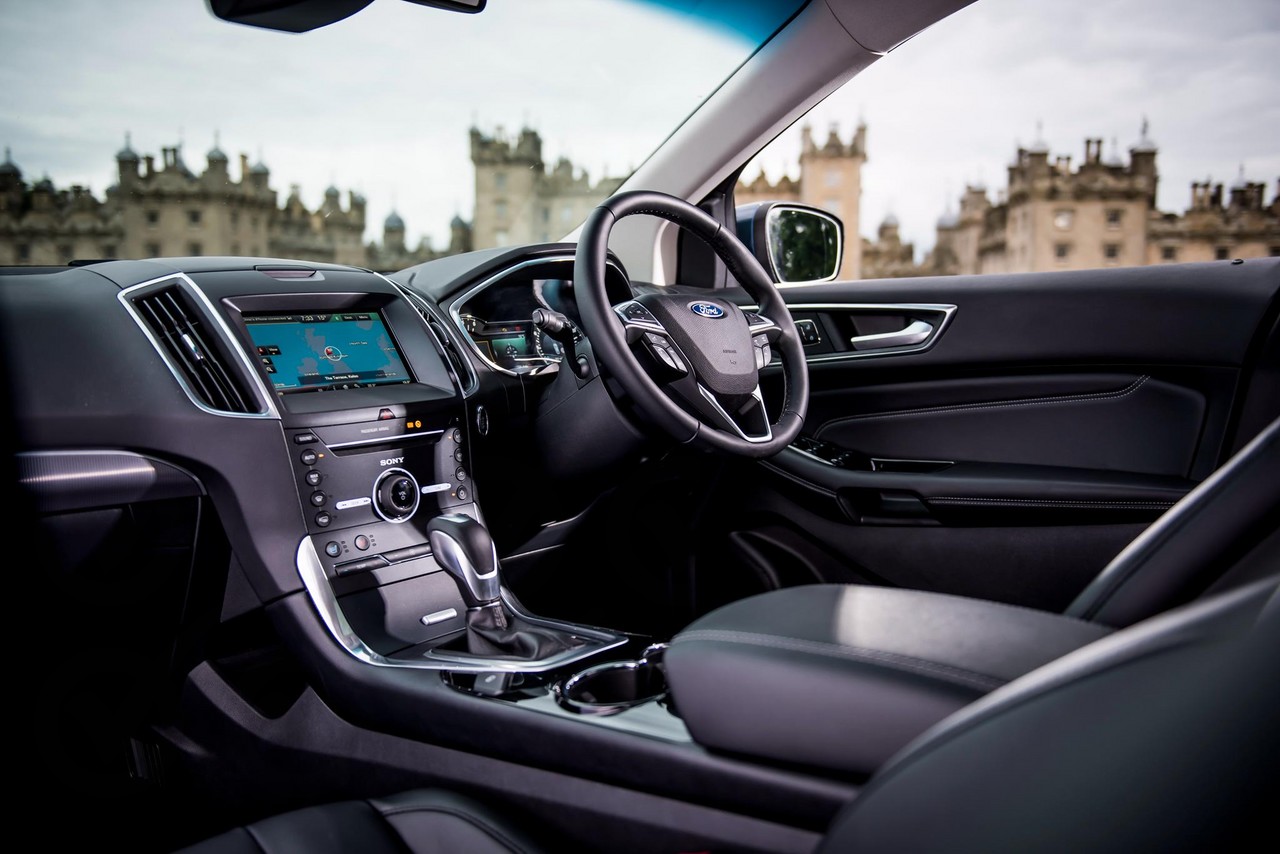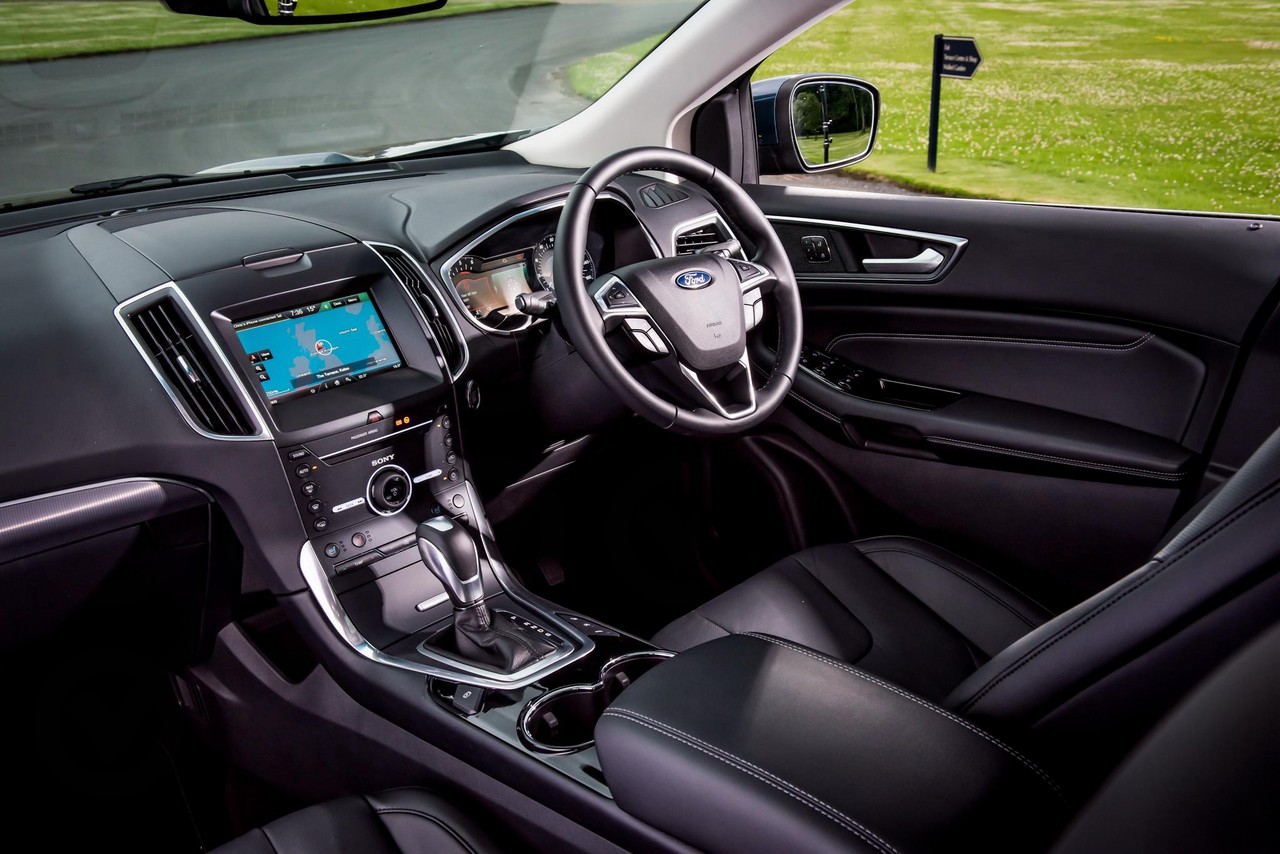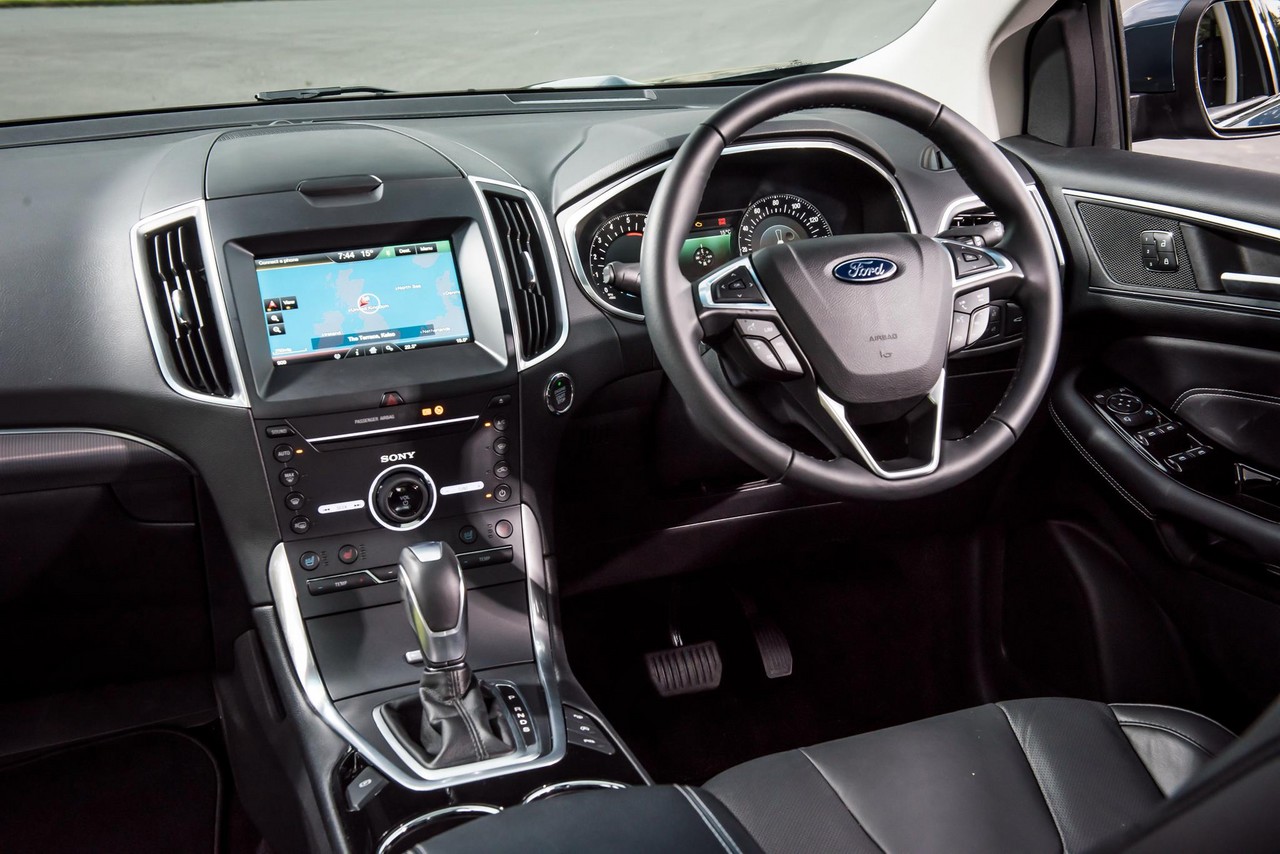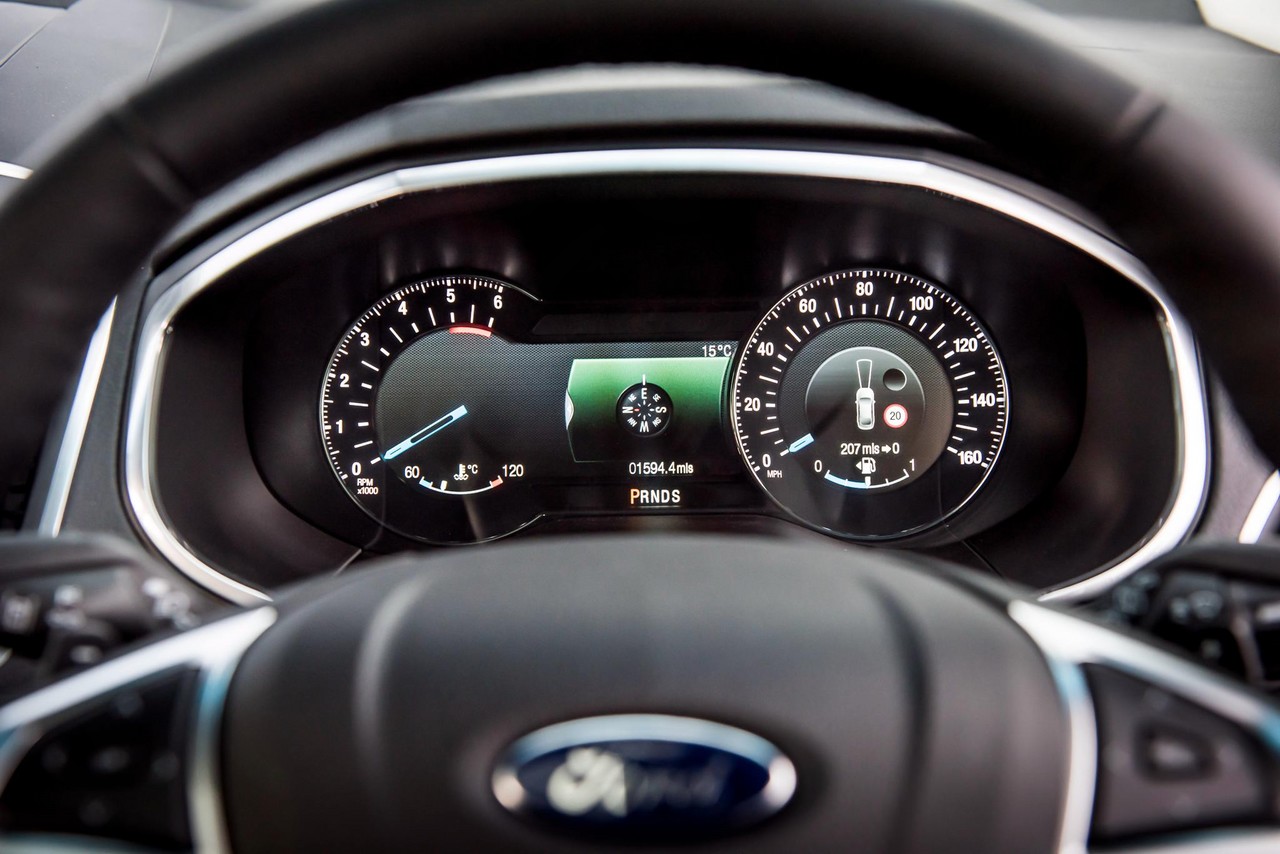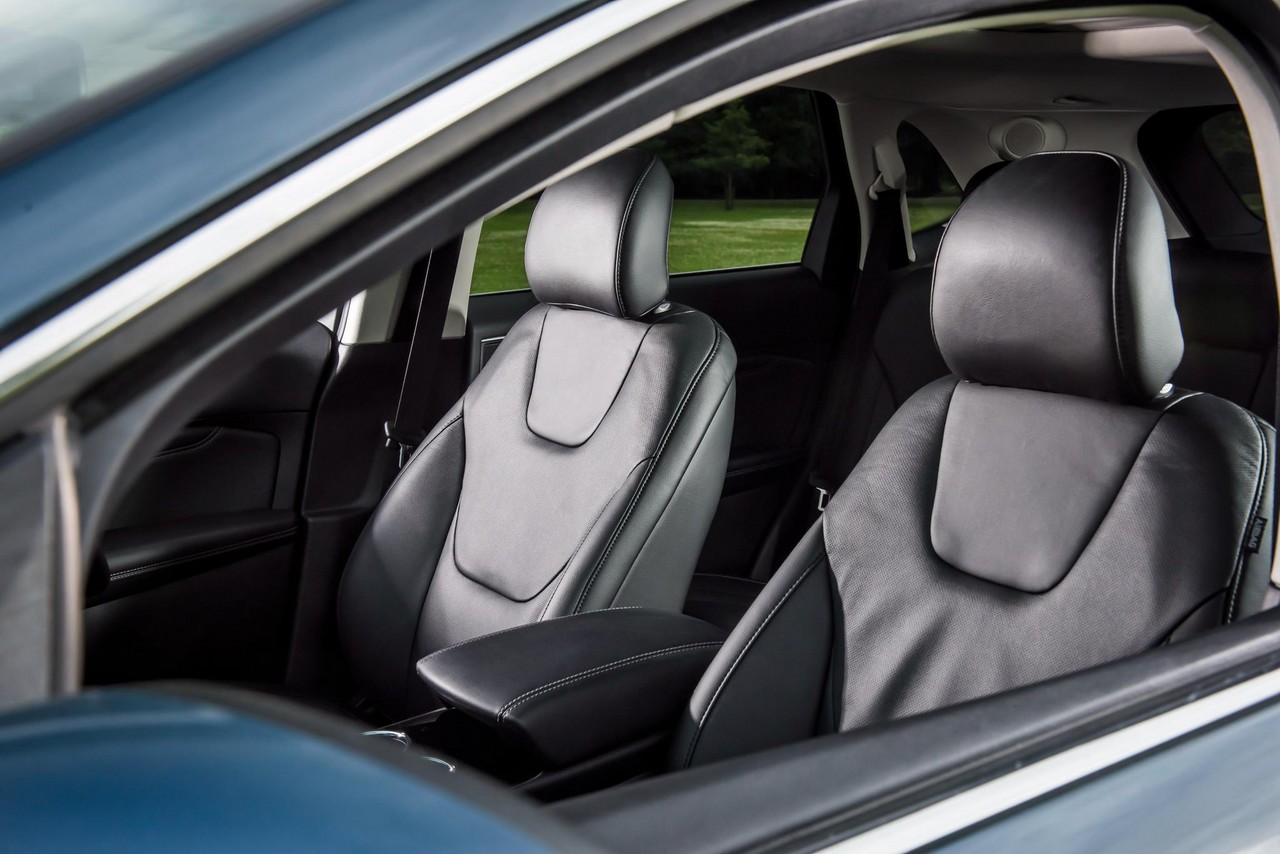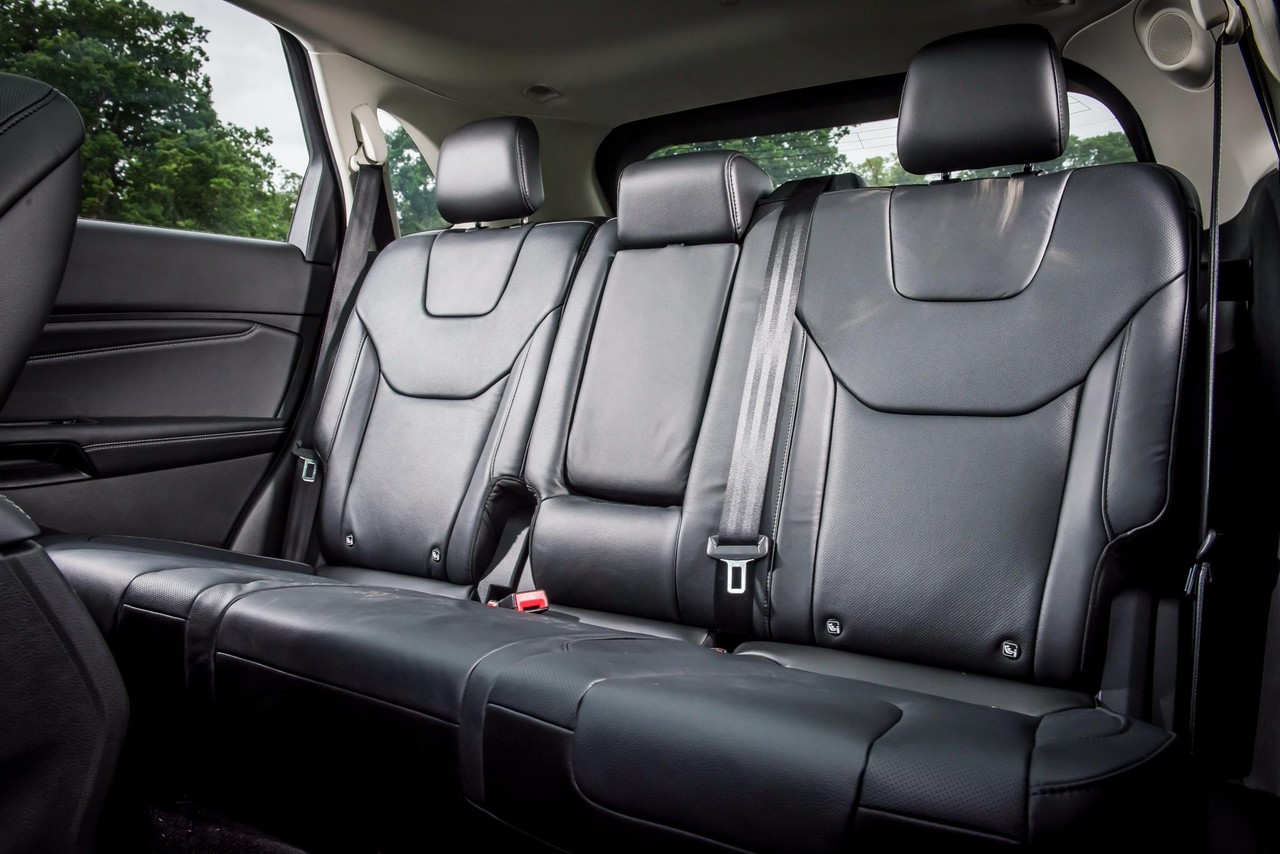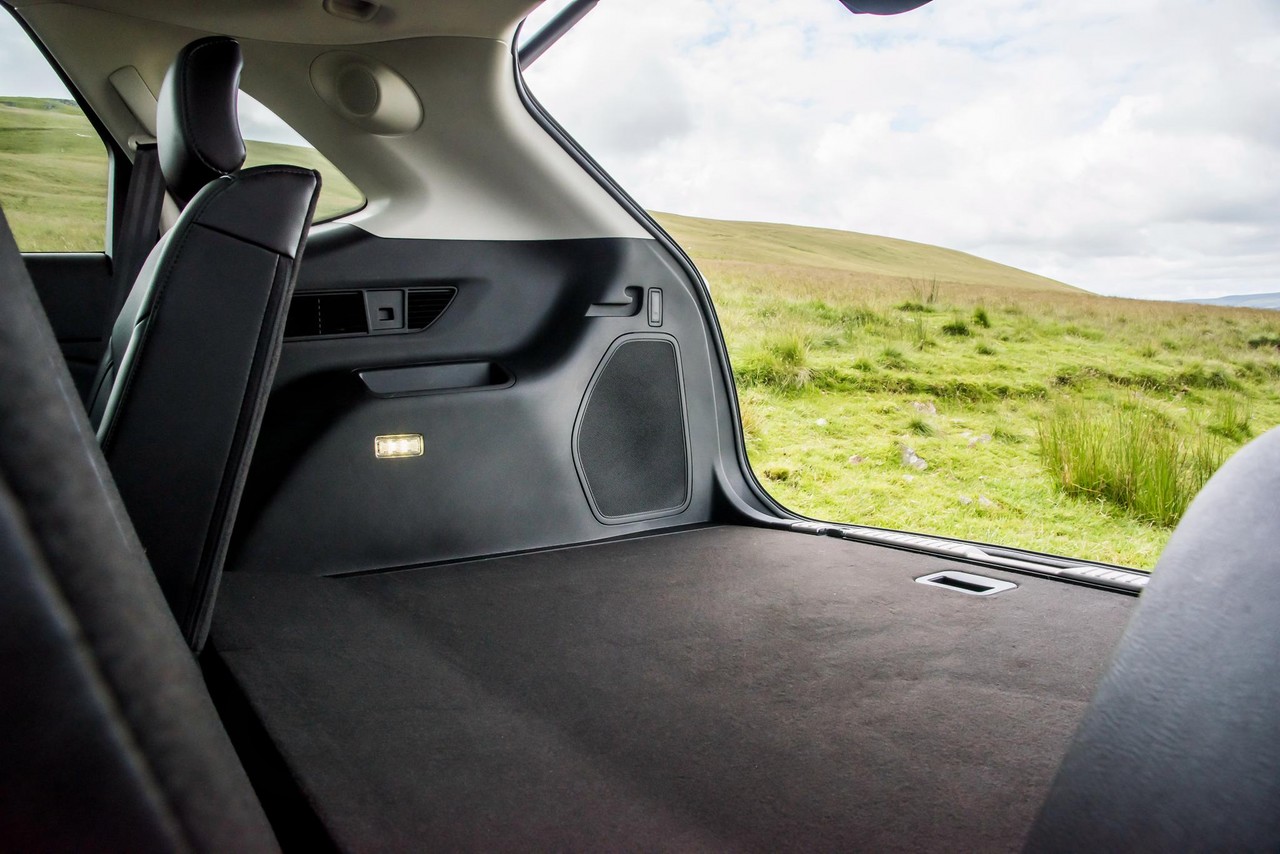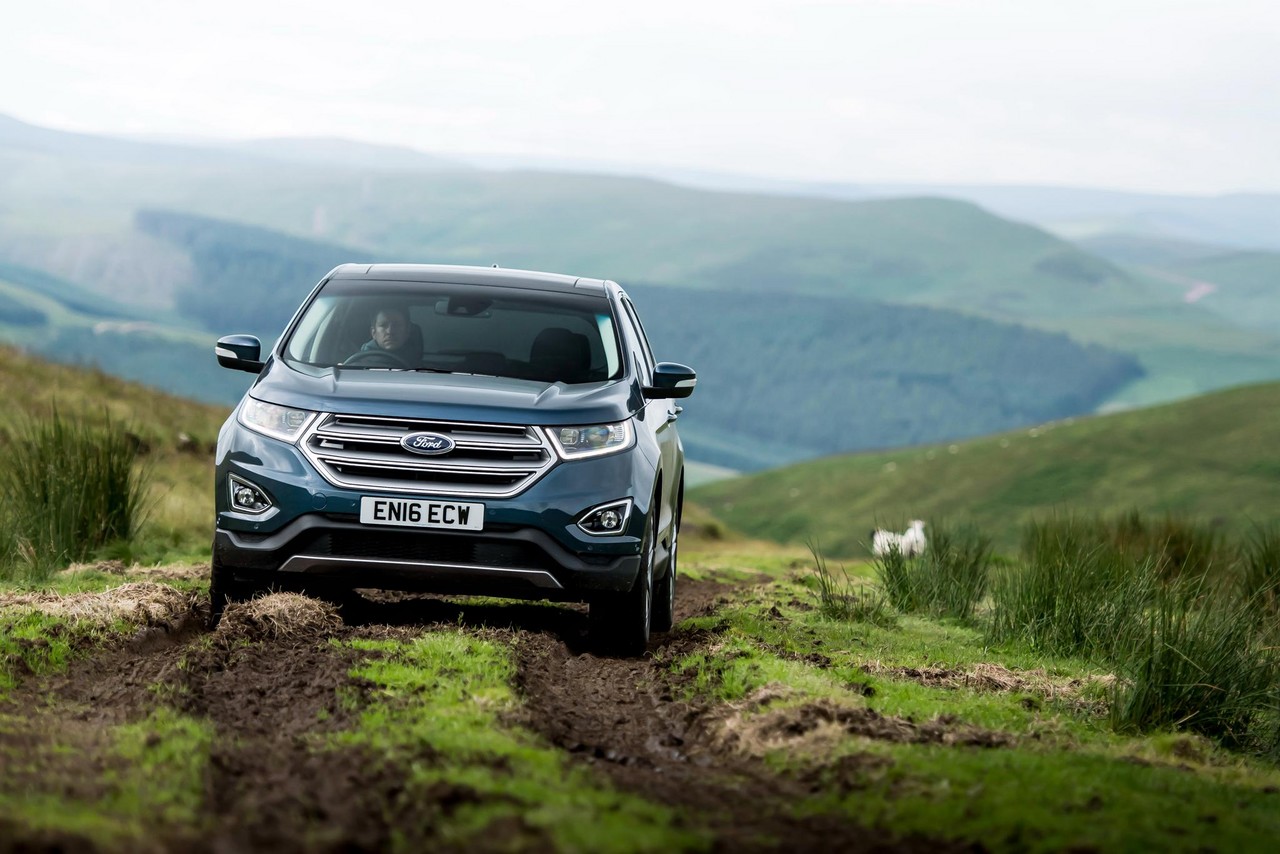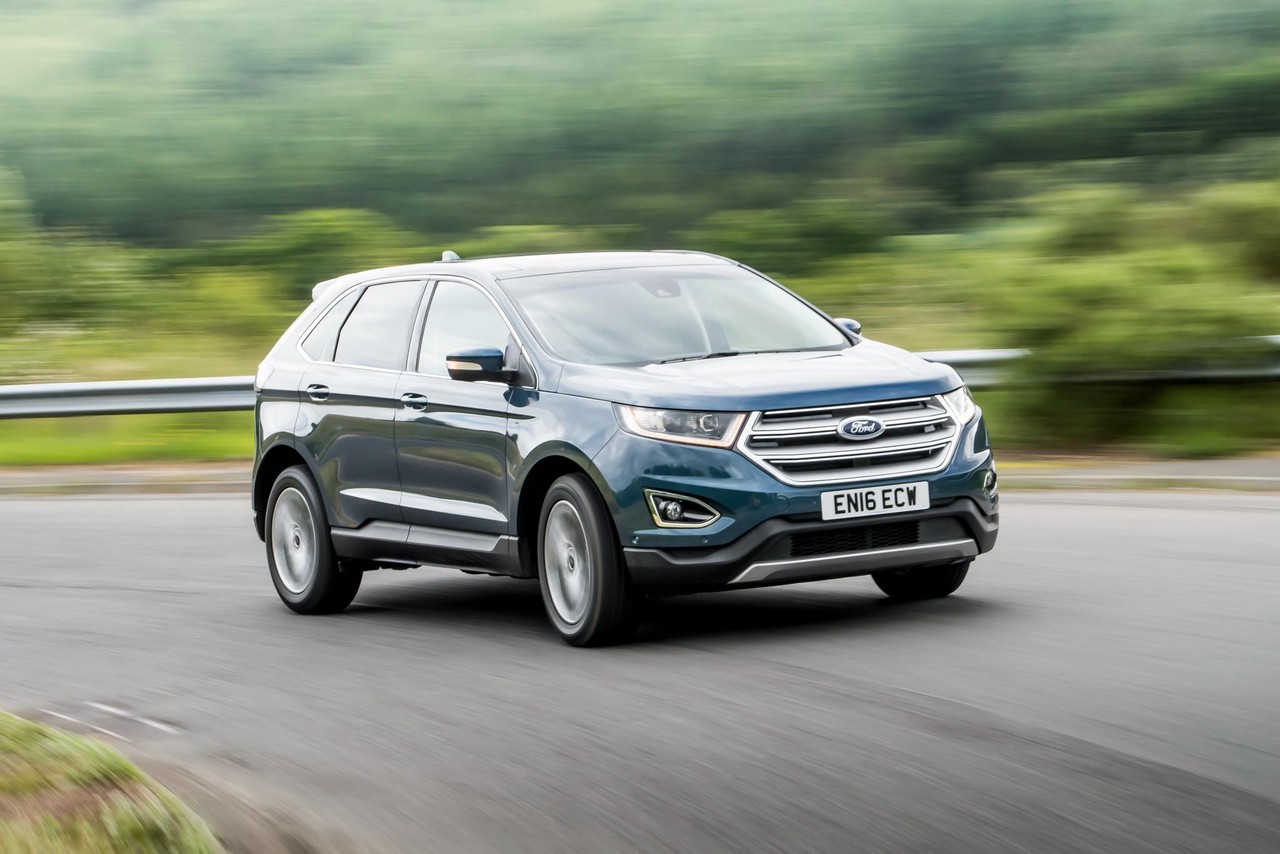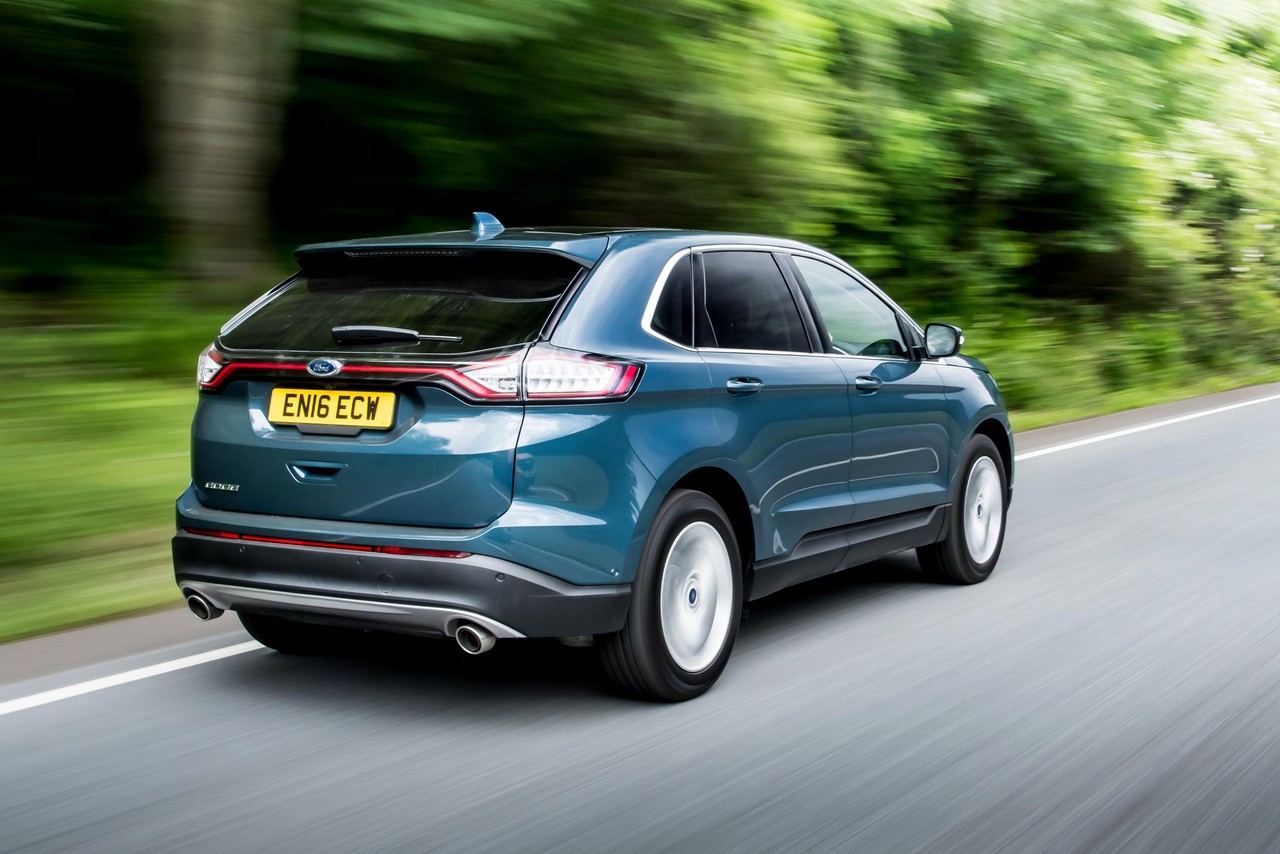
- Comfortable ride
- Quiet interior
- Large luggage area
- Accurate steering
- Body roll when cornering
- Weight blunts performance, particularly for 2.0 TDCi 130 kW engine
Overview
Released in Australia in December 2018, the Ford Endura was a large, five-seat SUV. Manufactured at Ford’s Oakville plant in Ontario, Canada, the Ford Endura was powered by a 2.0-litre turbo-diesel engine that was mated to an eight-speed automatic transmission; over the combined ADR 81/02 test cycle, fuel consumption for the Ford Endura was 6.7 litres per 100 km. The Ford Endura was available in front- and all-wheel drive, and its range consisted of Trend, ST-Line and Titanium variants.
In international markets, the Ford Endura was badged as the Ford Edge. In Australia, however, Ford was unable to use ‘Edge’ because Toyota had registered it as a trademark.
| Variant | Engine | Trans. | Peak power | Peak torque |
|---|---|---|---|---|
| Trend, ST-Line, Titanium |
2.0-litre turbo diesel I4 | 8sp auto | 140 kW at 3500 rpm | 400 Nm at 2000-3000 rpm |
All-wheel drive system
The Ford Endura was available with an ‘Intelligent all-wheel drive’ which consisted of an electro-hydraulically controlled multi-plate clutch and used 25 sensors to monitor vehicle movement and traction at 16 millisecond intervals. While torque was directed to the front wheels in normal conditions, the torque distribution could be pre-emptively adjusted to avoid wheel spin. When fully engaged, the multi-plate clutch could transfer up to 50 per cent of the engine’s torque to the rear wheels. According to Ford, this transfer could occur in less than 20 milliseconds.
Dimensions and body
The Ford Endura was underpinned by Ford’s CD4 platform which was shared with the Ford Mk5 Mondeo . Compared to the Ford Mk.2 Kuga , the Ford Endura was 298 mm longer (at 4822 mm), 90 mm wider (1928 mm), 7 mm taller (1692 mm, excluding roof rails) and had a 159 mm longer wheelbase (2849 mm). In Europe, kerb weights for the diesel-powered Ford Endura ranged from 1913 kg to 1949 kg. Furthermore, the Ford Endura had:
- Approach and departure angles of 18.8 and 22.4 degrees, respectively; and,
- A maximum braked towing capacity of 2000 kg.
The Ford Endura had a luggage volume of 602 litres beneath the luggage cover, though this increased to 1847 litres when the rear seats were folded and luggage was filled to the roofline.
Suspension
The Ford Endura had MacPherson strut front suspension with L-shaped lower control arms and multi-link rear suspension. Furthermore, both the front and rear suspensions were mounted on isolated sub-frames and had anti-roll bars.
Steering
The Ford Endura had rack-and-pinion steering with electric power assistance; its turning circle was 11.9 metres
Safety equipment
Standard safety equipment for the Ford Endura included dual front airbags, dual front knee airbags, front seat-mounted side airbags, full-length curtain airbags, ABS, electronic brake force distribution, brake assist, electronic stability control, traction control and front seatbelts with pre-tensioners and load limiters.
As standard, the Ford Endura was equipped with the following safety technologies –
- Forward Collision Warning and Autonomous Emergency Braking with Pedestrian Detection: monitored the road ahead and assessed potential collision hazards. If detected, an audible alert would sound and the braking system would be primed for maximum response when the driver applied the brakes. If the driver failed to respond, the brakes would be applied automatically to avoid or reduce the severity of the collision. It is understood that Pre-Collision Assist with Pedestrian Detection operated at speeds up to 50 km/h;
- Adaptive Cruise Control: a radar-based cruise control system which could maintain a set distance from the vehicle ahead. If the system detected that the vehicle ahead was decelerating or too close, it would apply the brakes to maintain the set distance. Once the road was clear, the system then accelerated the vehicle back to the desired cruising speed;
- Lane Keeping Aid: operating at speeds above 60 km/h, the Lane Keeping Aid could apply steering wheel torque to keep the vehicle in its lane if the vehicle was detected to be drifting out of it. Furthermore, the ‘Pull-Drift Compensation’ function could detect road or environmental conditions – such as a crowned road surface or crosswinds – and adjust the EPAS system accordingly;
- Evasive Steering Assist: using the radar sensors and forward-facing camera to detect slower-moving and stationary vehicles, Evasive Steering Assist provided ‘steering support’ at city and motorway speeds to assist drivers in manoeuvring around a vehicle if a collision was imminent;
- Traffic Sign Recognition: used a digital camera to identify traffic signs on either side of the road and on bridges, providing the driver with information such as the speed limit and overtaking regulations via the instrument cluster display; and,
- Post-Collision Braking: after a collision, Post-Collision Braking automatically applied moderate brake pressure to reduce the likelihood and impact of a potential secondary collision.
As part of Ford’s ‘SYNC 3i’ connectivity system, an ‘Emergency Assistance’ function could be activated to call local emergency services operators if a collision that triggers the airbags.
Euro NCAP testing: Ford Edge
In Euro NCAP testing , the Ford Edge (as it is marketed worldwide) received a five star safety rating which included an 85 per cent adult occupant protection rating and a 76 per cent child occupant protection rating. In the frontal offset test, protection of the driver’s head, thighs, lower legs and feet were rated as good, while chest protection was rated as adequate (i.e. a slight risk of serious injury). While maximum points were awarded in the side impact test, chest protection was rated as marginal in the more severe pole test.
Wheels, tyres and brakes
The Ford Endura Trend had 8.0J x 18-inch alloy wheels with 245/60 R18 tyres. The Endura ST-Line and Titanium, however, had 8.0J x 20-inch alloy wheels with 245/50 R20 tyres.
The Ford Endura had 345 mm by 32 mm ventilated front brake discs and 345 mm by 11 mm solid rear discs.
Features: Ford Endura Trend
The standard infotainment package for the Ford Endura consisted of ‘SYNC 3i’ system with an eight-inch colour touchscreen, integrated satellite navigation with Traffic Management Channel, Bluetooth mobile phone connectivity, Apple CarPlay and Android Auto smartphone integration, a nine speaker sound system, digital radio tuner (DAB+), two USB ports, three 12 volt power sockets and a 230 volt inverter.
Beyond this, standard features for the Ford Endura Trend included ‘Ebony’ fabric trim, a ten-way power adjustable driver’s seat, a six-way manually adjustable front passenger seat, dual-zone climate control air conditioning, directional LED headlamps with auto on-off and auto high beam, LED fog lamps with daytime running lamps, reversing camera, front and rear parking sensors, rain-sensing wipers, a leather-wrapped steering wheel with gearshift paddles, 60:40 split/fold second row seats, remote central locking with proximity key (Ford’s ‘Smart Keyless entry’), power adjustable and folding door mirrors with heating and puddle lamps, power windows, tilt/telescopic steering wheel adjustment, an electrochromatic rear view mirror, push-button start, an electronic park brake, rear privacy glass, silver roof rails, tyre pressure monitoring, a ten-inch display within the instrument cluster, a trip computer and an immobiliser.
As standard, the Ford Endura was equipped with ‘Active Noise Control’ which used three microphones positioned within the cabin to monitor engine noise – this information was then used to generate and emit reverse phase sound waves through the audio system to reduce engine noise (even when the entertainment system was switched off).
Features: Ford Endura ST-Line
Compared to the Endura Trend, the Endura ST-Line added ‘Ebony Miko Suede’ perforated seat trim with leather accents, heated and ventilated front seats, a ten-way power adjustable front passenger seat, driver’s seat memory settings, a power liftgate with hands-free operation, aluminium floor pedals, front aluminium scuff plates, a rear cargo net, rear cargo blind and ambient lighting. For the Endura ST-Line, the door mirrors also had memory settings and auto-dip on reverse, while the driver’s door mirror was electrochromatic (i.e. regulated reflections of flashing light).
Visually, the Endura ST-Line could be identified by its 20-inch bright finish alloy wheels with black inserts, ST-Line body kit, black trapezoidal front grille and surround, chrome-finished fog light bezels, black door frame and beltline, and black roof rails. The Endura ST-Line also had ‘sports-tuned’ suspension.
Features: Ford Endura Titanium
The range-topping Ford Endura Titanium was distinguished by its ‘Salerno’ micro-perforated seat trim with leather accents, heated second row seats, adaptive bi-LED headlights with glare-free function, a power adjustable steering column with memory settings, illuminated front scuff plates and cargo mats. Furthermore, roof rails were omitted for the dual-panel panoramic glass roof.
The Ford Endura Titanium was also equipped with Ford’s ‘Enhanced Active Park Assist’ which used sensors to measure parking spaces and provided automated steering for parallel and perpendicular parking manoeuvres while the driver controleld vehicle speed. Furthermore, Enhanced Park Assist had a ‘Park-Out Assist’ function which helped drivers exit from a parallel parking space.
Visually, the Endura Titanium could be identified by its 20-inch bright finish alloy wheels and chrome headlamp bezels.
Brochure
